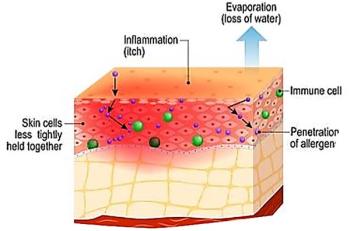
AAAAI: Oral Immunotherapy Dampens But May Not Cure Peanut Allergy
SAN DIEGO -- Five of seven children with severe peanut allergy were able, after two years of oral immunotherapy, to tolerate a dose of 7.8 grams of peanut flour, equivalent to eating more than 13 peanuts.
SAN DIEGO -- An oral immunotherapy regimen can help take the sting out of severe peanut allergies, reported investigators here.
Five of seven children with severe peanut allergy were able, after two years of immunotherapy, to tolerate a dose of 7.8 grams of peanut flour, equivalent to eating more than 13 peanuts, reported Scott David Nash, M.D., of Duke in Durham, N.C., and colleagues.
Yet while oral immunotherapy can desensitize patients to peanuts, children who undergo it may not be in the clear, cautioned the authors in a featured poster session at the annual meeting of the American Academy of Allergy, Asthma & Immunology here.
"We think that our patients are now at decreased risk for anaphylaxis if they have accidental ingestion [of peanuts], but we're not recommending that our patients reintroduce peanuts into their diets, and all patients were on peanut-elimination diets during the study," said Dr. Nash.
The investigators enrolled children with a convincing clinical history of peanut allergy who had peanut-specific immunglobulin E (IgE) of 7kU/L or greater.
The children were started on a modified rush immunotherapy protocol, performed in the research unit, in which they would receive over one day increasing multiple doses of peanut flour (mixed in a food of choice, such as applesauce), with dose escalating from 0.1 mg to 25 mg, or, if tolerated, to 50 mg. About half of the patients were able to tolerate the 50 mg dose by the end of the day; the remainder were able to tolerate either 12.5 or 25 mg, said Dr. Nash.
The children then went home and remained on their current dose daily, returning to the center every two weeks for a dose increase until they reached a dose of 300 mg, equivalent to about one peanut. Parents were asked to keep a daily diary of symptoms.
After patients had been maintained on 300 mg of peanut flour daily for two years, they returned to the center for an open food challenge of up to 7.8 g of peanut flour, equal to a good adult-sized handful of nuts. The challenge was delivered as escalating doses beginning at 600 mg every 30 minutes up to the maximum.
In all, five of seven patients had no reaction on the food challenge. One patient took the full dose, but 90 minutes later had a reaction, including stridor, that required epinephrine. The remaining patient made it to 4,200 mg, and then required epinephrine for cough and diffuse hives.
They also looked at immunologic characteristics of food allergy, and found that peanut-specific IgE and IgG both rose initially and the fell during the study, while peanut-specific IgG4 increased throughout the study.
"Peanut oral immunotherapy, we feel, is safe and effective for peanut-allergic patients, and we feel that our immunologic findings for peanut oral immunotherapy are similar to what we find for other forms of oral immunotherapy," Dr. Nash said.
Newsletter
Enhance your clinical practice with the Patient Care newsletter, offering the latest evidence-based guidelines, diagnostic insights, and treatment strategies for primary care physicians.






















































































































































































































































































